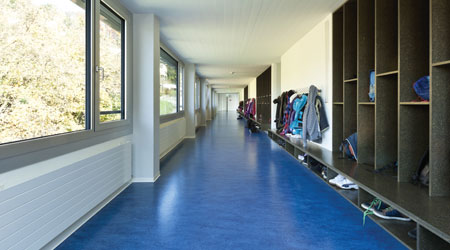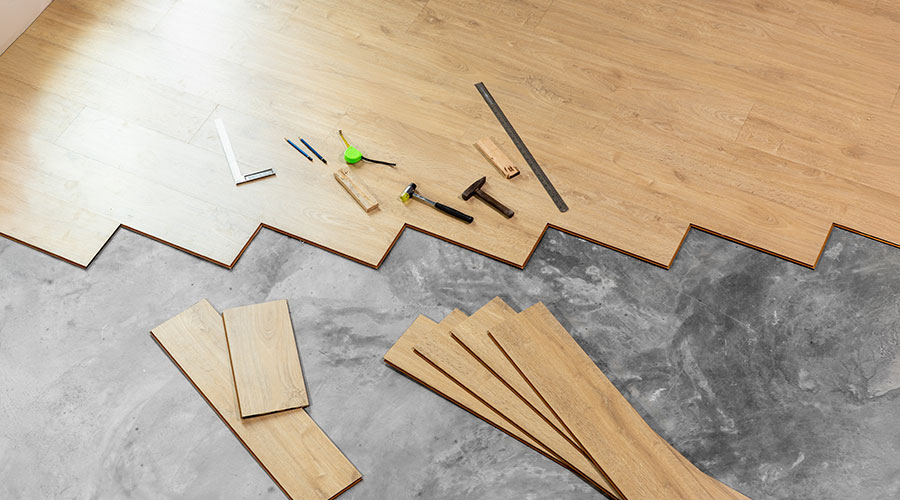The Facilities Manager's Role in Flooring Projects
One of many reasons it’s critical for FMs to be involved in the flooring selection process is so that they can be sure that the flooring chosen can be properly maintained and will look good for the life of the product.
You are responsible for the building’s care and upkeep. Therefore, it should be a foregone conclusion that any flooring project has your involvement. This begins with the budgeting for replacement and continues with the process of selecting an appropriate product for a particular space, to managing the installation process, to following through on ensuring warranty issues are settled. For that reason, a start-to-finish "how to" guide on pertinent best practices for flooring installations can be particularly useful.
Flooring is certainly one of the most important components of a building’s aesthetics and performance, so the flooring selected not only has to look good but also stay looking good for as long as possible. For that to happen, it’s important to have a plan — and follow it.
Whether you oversee millions of square feet or tens of thousands, you need to know how to select the appropriate flooring product for your application. Today’s flooring choices are extensive and finding the right one can be confusing and frustrating. With all the hard surface flooring options on the market, you must know what will work best where and how to use it. There is a lot of hype about these products being waterproof, having different core structures, and in general being the greatest thing since sliced bread. Think of this as the gold rush days in the Wild West. Manufacturers are gunning for your business, so you have to be more knowledgeable and diligent than ever.
Getting started
The first thing to determine is what you and the occupants like most and least about the existing flooring. If you like what you have, it should be easy enough to look for the product that will deliver the same type of performance that the old product delivered but in a new and appropriate way. If the old flooring was carpet and the new flooring will be some type of hard surface, how do you make the transition from soft to hard surface without getting yourself in trouble? Most of the soft surface products are carpet tile and the majority of them, as long as you select the appropriate style and color, will deliver excellent performance. Carpet tile will not wear out, but the wrong selection — wrong in color, style, and construction — can get ugly quickly. It will look worn, dirty, and old. You have to make sure you do your homework on product selection so you don’t get stuck with something that goes south fast, and that you’ll be paying for, in more ways than one, for a long time.
If you are taking up an old floor or one that requires an abatement process, you have to know that the chemicals used to abate the old flooring can compromise the new installation if there’s any chemical residue left in the slab. If the slab is old and on grade, without a moisture vapor retarder, any moisture volatizing from the slab can carry the abatement chemical residue with it and compromise your new flooring. If this happens the new flooring has to be torn up, and a determination made as to how far down the abatement chemical goes by core drilling and having the core analyzed, the slab mitigated, and new flooring installed.
For a new building, you must first consider the substrate on which the flooring is to be installed so that there is no moisture, admix, or concrete components that could compromise the installation. Every concrete slab is different as is every mix of concrete, and there can always be something in the mix that will make the flooring installation fail. If you have moisture concerns, stay away from any topical or admix silicate additives or sprays. There is no guarantee they work; they are not condoned by the concrete or flooring industry. In fact, more and more flooring and adhesive manufacturers’ warranties will be voided if a silicate has been used in or on the slab. Anything else on the slab that could be a bond breaker or compromise the installation should also be avoided.
If you have decided on hard surface flooring, you’ll likely be looking at a vinyl tile, plank, or sheet goods. You might also want to think sustainability and go with a cork, rubber, or linoleum product. As is true of any product, sustainable products have some cons you should understand. The most sustainable you can be is to follow this saying: “Get it in the door and keep it on the floor.” If a supposedly sustainable product fails, it winds up in the landfill, you waste a lot of time, lots more money, and suffer from headaches you don’t need.
But it’s not just sustainable products that require careful attention. If you are using a vinyl plank, you have to make sure it’s of high quality and will perform. You can’t use a floating installation in a commercial application because the system of installation can be easily compromised with rolling or heavy traffic. So, if the facility is a hospital or other healthcare facility with wheelchairs or heavy traffic, forget about floating the floor. And don’t think you can save money by going over an existing floor. The new flooring on top may stop something the old floor was doing without anyone noticing, and now you’ve changed the dynamics of physics and chemistry. The old floor could react to the new one and, guess what, you’re on the path to pain trying to resolve the issue.
For example, suppose a facility has an existing vinyl composition tile flooring that seems to be down tight. There appears to be no reason to remove it, so a new vinyl plank flooring is installed over the top of it. Unfortunately, moisture was coming out of the old floor without affecting it. But the new floor traps that moisture, which could compromise the old floorcovering and cause it to fail — come off the floor, lift, heave, etc. The new floor would also be compromised — lifting and coming up. The same scenario could play out if you had a wood floor that was performing well and you now cover it with a new luxury vinyl tile. The old floorcovering fails and so does the new one.
In both cases, moisture in the substrate could have been volatizing, or evaporating from or around the edges of old flooring or tile. Now that it’s covered, the moisture vapor is trapped and a new dynamic has been created to cause a flooring failure. Simply, the old floor was breathing, and the new floor stopped it from doing so.
Part of picking the correct product is to think about maintaining it. If you select a product that gives you fits to keep it clean and looking good, you didn’t make a wise investment. Everyone likes pretty, but pretty isn’t always practical.
Stay out of trouble
A critical step in staying out of trouble with new flooring is to be involved throughout the whole process. If you let a specifier or architect make the selections, they may base their decisions on criteria other than what’s most important to you, who has to live with what they picked. This also goes for flooring sales reps. The rep does not know the answers to all of the questions that you and your designers and architects ask.
The best option is to go with the local commercial flooring contractor that knows more overall about various products and issues you may face with a flooring project. They install all kinds of flooring in all kinds of conditions and will know what works and what doesn’t. They’ll also know how to install the products and how to avoid pitfalls. They offer products from a range of flooring manufacturers so you won’t be getting something a rep may want to push. This way, you can be sure you’ll get the information you’ll need to optimize a product's performance, prevent problems, and eliminate complaints.
You’ll also want a spec for the flooring installation that states the flooring contractor and their installers have at least 10 years of experience, so you don’t get a retail dealer trying to horn in on a commercial job they may have no business doing or a low bidder that can’t handle the job.
Lewis Migliore (lgmtcs@optilink.us) is president of LGM and Associates, which offers technical flooring services, including help or guidance with a new flooring project or a failure on an existing floor.
Related Topics:











